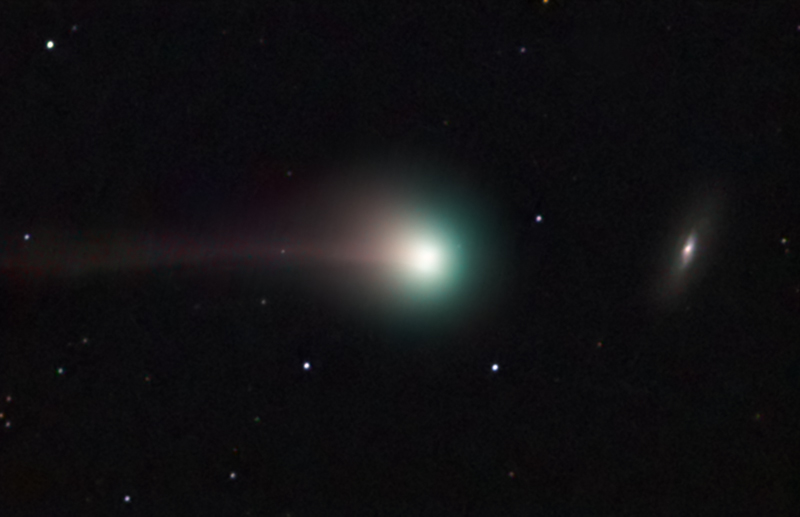It would be an interesting survey to catalog the initial reactions readers have to “Trojans”. Do you think first of wooden horses, or do asteroids spring to mind? Given the context of this website, I’d hope it’s the latter. If so, you’re thinking along the right lines. But how much do you really know about astronomical Trojans?
While most frequently used to discuss the set of objects in Jupiter’s orbital path that lie 60º ahead and behind the planet, orbiting the L4 and L5 Lagrange points, the term can be expanded to include any family of objects orbiting these points of relative stability around any other object. While Jupiter’s Trojan family is known to include over 3,000 objects, other solar system objects have been discovered with families of their own. Even one of Saturn’s moons, Tethys, has objects in its Lagrange points (although in this case, the objects are full moons in their own right: Calypso and Telesto).
In the past decade Neptunian Trojans have been discovered. By the end of this summer, six have been confirmed. Yet despite this small sample, these objects have some unexpected properties and may outnumber the number of asteroids in the main belt by an order of magnitude. However, they aren’t permanent and a paper published in the July issue of the International Journal of Astrobiology suggests that these reservoirs may produce many of the short period comets we see and “contribute a significant fraction of the impact hazard to the Earth.”
The origin of short period comets is an unusual one. While the sources of near Earth asteroids and long period comets have been well established, short period comets parent locations have been harder to pin down. Many have orbits with aphelions in the outer solar system, well past Neptune. This led to the independent prediction of a source of bodies in the far reaches by Edgeworth (1943) and Kuiper (1951). Yet others have aphelions well within the solar system. While some of this could be attributed to loss of energy from close passes to planets, it did not sufficiently account for the full number and astronomers began searching for other sources.
In 2006, J. Horner and N. Evans demonstrated the potential for objects from the outer solar system to be captured by the Jovian planets. In that paper, Horner and Evans considered the longevity of the stability of such captures for Jupiter Trojans. The two found that these objects were stable for billions of years but could eventually leak out. This would provide a storing of potential comets to help account for some of the oddities.
However, the Jupiter population is dynamically “cold” and does not contain a large distribution of velocities that would lead to more rapid shedding. Similarly, Saturn’s Trojan family was not found to be excited and was estimated to have a half life of ~2.5 billion years. One of the oddities of the Neptunian Trojans is that those few discovered thus far have tended to have high inclinations. This indicates that this family may be more dynamically excited, or “hotter” than that of other families, leading to a faster rate of shedding. Even with this realization, the full picture may not yet be clear given that searches for Trojans concentrate on the ecliptic and would likely miss additional members at higher inclinations, thus biasing surveys towards lower inclinations.
To assess the dangers of this excited population, Horner teamed with Patryk Lykawka to simulate the Neptunian Trojan system. From it, they estimated the family had a half life of ~550 million years. Objects leaving this population would then undergo several possible fates. In many cases, they resembled the Centaur class of objects with low eccentricities and with perihelion near Jupiter and aphelion near Neptune. Others picked up energy from other gas giants and were ejected from the solar system, and yet others became short period comets with aphelions near Jupiter.
Given the ability for this the Neptunian Trojans to eject members frequently, the two examined how many of the of short period comets we see may be from these reservoirs. Given the unknown nature of how large these stores are, the authors estimated that they could contribute as little as 3%. But if the populations are as large as some estimates have indicated, they would be sufficient to supply the entire collection of short period comets. Undoubtedly, the truth lies somewhere in between, but should it lie towards the upper end, the Neptunian Trojans could supply us with a new comet every 100 years on average.


Actually. . . Trojans have never made me think of 300. They do make me think of the fall of Troy during the Trojan War, seven hundred years prior to the battle of Thermopylae though.
Good article otherwise!
Right: 300 = number of Spartans under King Leonides at Thermophyae.
It is curious these Lagrange points are that stable given they define in the rotating raference frame saddle point potentials.
LC
Hush young Padawan. It’s all Greek to me.
well, I think of my old school USC.
miguelito27 — it’s not just you. 😉
Is it just me or was I the only one that thought of condoms when I first saw the title? Sorry if my mind wasn’t on more “celestial” objects at the time.
I’d considered that too Miguelito, but I wasn’t about to plant it in the minds of people that didn’t already have it there.
Given the large numbers of short period comets with 5.2 A.U. apohelions, it sure looks like the Trojans feed our short period comet population.
Trojans were Asian, not Greek.
“Trojan” makes me think of a type of computer virus.